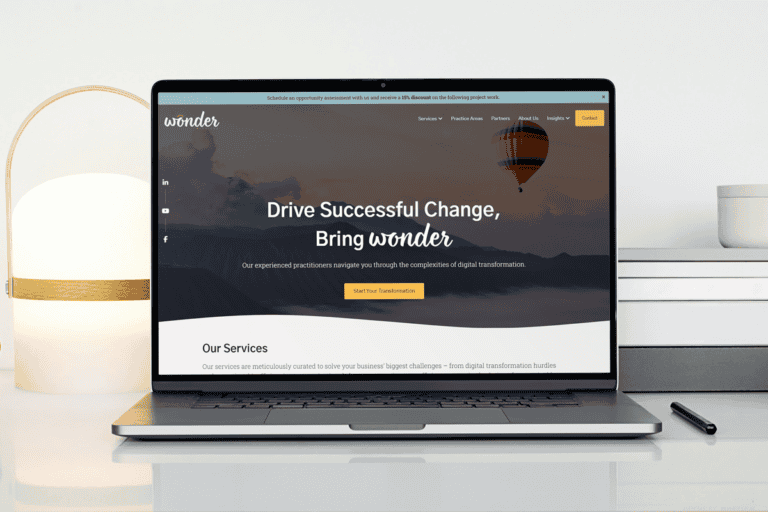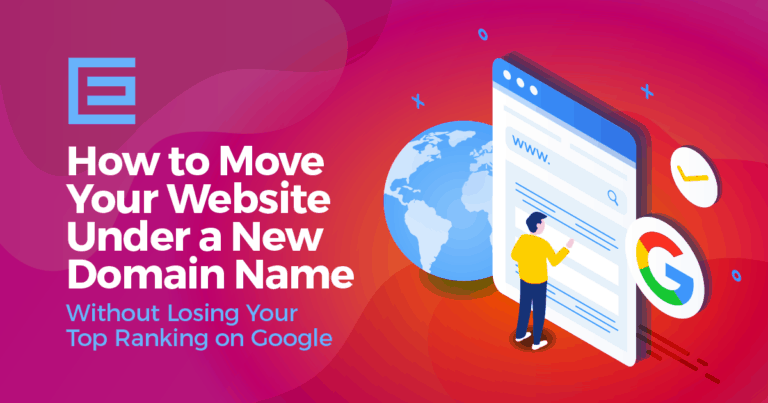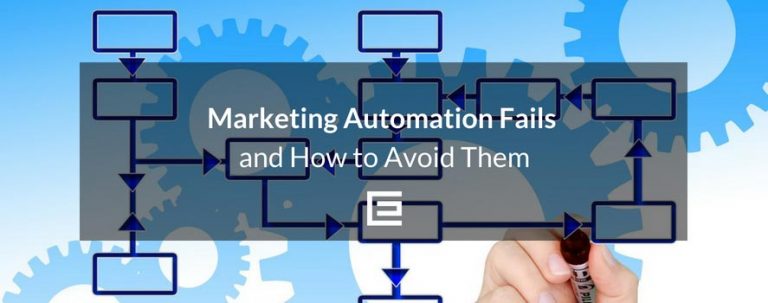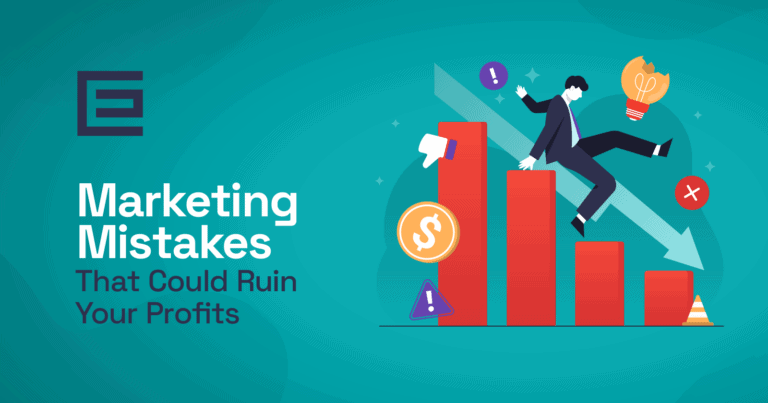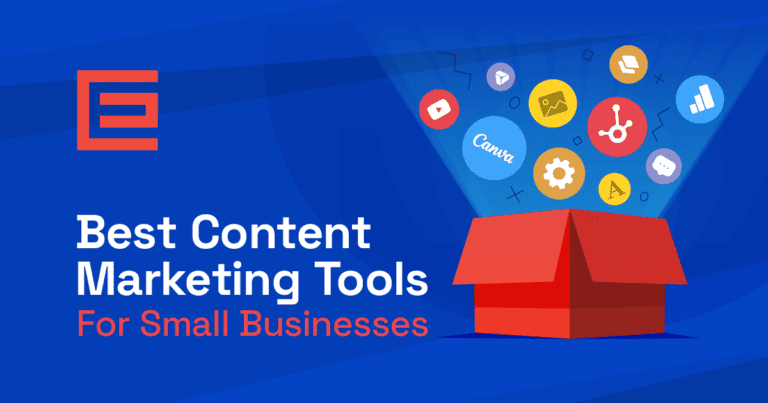At its core, an email list is more than just a collection of addresses; it’s a curated group of individuals who have expressed interest in your brand, products, or services. This direct line of communication is invaluable for several reasons.
Firstly, email marketing remains one of the most cost-effective strategies in the digital realm. Unlike other platforms where you’re battling algorithm changes and competing for attention, emails land directly in a subscriber’s inbox. This direct access ensures that your message is seen by people who are already interested in what you have to offer, leading to higher engagement rates.
Moreover, email lists offer unparalleled personalization opportunities. With the data you gather, you can tailor your messages to meet the specific needs and preferences of your audience, fostering a deeper connection. This personalized approach not only enhances customer experience but also significantly boosts conversion rates.
Lastly, owning an email list means you’re not at the mercy of third-party platforms. Changes in social media algorithms or search engine policies can drastically affect your visibility elsewhere, but your email list remains a stable, reliable asset in your marketing arsenal.
Strategies for Building an Email List: A Sneak Peek
Building an email list is not a one-size-fits-all endeavor; it requires a blend of creativity, strategy, and persistence. The process begins with choosing the right platform to manage your emails, ensuring you have the tools needed for effective communication and analysis.
The heart of list building lies in creating compelling opt-in pages and forms. These are your digital front doors, inviting visitors to enter and engage with your brand. The key here is to offer value – be it through informative newsletters, exclusive deals, or engaging content – that incentivizes users to sign up.
Pop-up forms and calls to action (CTAs) are also crucial tools. When used wisely, they can significantly increase your sign-up rates without disrupting the user experience. The art is in finding the right balance between being persuasive and not intrusive.
Social media platforms, too, play a pivotal role. They’re not just channels for promotion but can be leveraged to direct traffic to your sign-up pages. Integrating your social media strategy with your email list building efforts can create a powerful synergy, driving up your subscriber count.
Lastly, never underestimate the power of incentives and giveaways. They can act as a catalyst, giving people that extra nudge to join your list. Whether it’s a free ebook, a discount code, or entry into a contest, these incentives can make a significant difference in your list-building efforts.
In the following sections, we’ll dive deeper into each of these strategies, unpacking the nuances and offering practical tips to effectively grow your email list. Use the table of content below to skip to any area you want to learn more about.
- 1Choosing the Right Email Marketing Platform
- 2Creating Effective Opt-In Pages
- 3Utilizing Sign-Up Forms
- 4Implementing Pop-Up Offers and Forms
- 5Crafting Compelling Calls to Action (CTAs)
- 6Leveraging Social Media Platforms
- 7Creating Targeted Landing Pages
- 8Offering Incentives and Giveaways
- 9Using Referral Programs
- 10Email List Building Best Practices
- 11Final Thoughts
Choosing the Right Email Marketing Platform
Key Criteria for Platform Selection
Selecting the right email marketing platform is akin to choosing a partner for your digital marketing journey. It’s a decision that can significantly impact the effectiveness of your email campaigns. Here are some essential criteria to consider:
User-Friendliness
The platform should be intuitive and easy to navigate, even for beginners. A user-friendly interface saves time and reduces the learning curve, allowing you to focus more on strategy and content.
Automation Capabilities
Automation is a game-changer in email marketing. Look for a platform that offers robust automation features, enabling you to send triggered emails based on user behavior, segment your audience, and schedule campaigns effortlessly.
Analytics and Reporting
Data is your compass in digital marketing. A good email platform provides detailed analytics, helping you track open rates, click-through rates, conversions, and more. This data is crucial for refining your strategies and improving campaign performance.
Integration Options
Your email marketing tool should play well with other tools and platforms you use. Integration with CRM systems, social media, and e-commerce platforms can streamline your workflow and provide a more cohesive marketing approach.
Scalability
As your business grows, your email marketing needs will evolve. Choose a platform that can scale with you, offering advanced features and higher capacity as your subscriber list expands.
Popular Email Marketing Platforms
Now, let’s take a quick tour of some popular email marketing platforms, each with its unique strengths.
HubSpot
HubSpot is more than an email marketing tool; it’s a comprehensive inbound marketing suite. Known for its powerful CRM integration, HubSpot allows you to personalize emails based on detailed customer data. It’s ideal for businesses looking for an all-in-one marketing solution.
Mailchimp
Mailchimp has long been a favorite among small businesses and solopreneurs. It stands out for its ease of use, attractive templates, and free plan for beginners. Mailchimp is a great starting point for those new to email marketing.
Constant Contact
Constant Contact is renowned for its exceptional customer support and user-friendly interface. It offers a range of customizable templates and is particularly effective for event-driven emails and surveys.
GetResponse
GetResponse is a versatile platform offering advanced features like autoresponders, segmentation, and a unique webinar feature. It’s a solid choice for marketers looking to combine email campaigns with webinars.
Optimonk
Optimonk focuses on converting visitors into subscribers and customers. It excels in creating pop-ups and forms that integrate seamlessly with your email marketing efforts, making it a valuable tool for growing your list.
The right email marketing platform is a cornerstone of successful digital marketing. It should align with your business needs, be easy to use, and offer the tools necessary to engage and grow your audience. Whether you’re a small startup or a large enterprise, there’s a platform out there that’s the perfect fit for your email marketing adventures.
Creating Effective Opt-In Pages
Crafting a User-Friendly Opt-In Experience
When it comes to building an email list, the opt-in page is your first impression, and we all know how much first impressions count. A user-friendly opt-in page isn’t just about looking good; it’s about creating an experience that is seamless, inviting, and reassuring for your potential subscribers.
Simplicity is Key
The design of your opt-in page should be clean and straightforward. Clutter is the enemy here. You want a design that guides visitors straight to the sign-up form without distractions. Use clear, concise language and ensure that the form is easily visible and accessible.
Speed and Responsiveness
In a world where patience is thin, and attention spans are even thinner, your opt-in page needs to load quickly and function flawlessly across all devices. A responsive design ensures that whether your visitor is on a desktop, tablet, or smartphone, the experience remains smooth and engaging.
Trust Signals
People are more cautious than ever about giving out their email addresses. Including elements like testimonials, trust badges, or links to your privacy policy can go a long way in building trust. Let them know their data is safe with you and that they’re signing up for something valuable.
The Magnetic Pull of Lead Magnets
A lead magnet is essentially a trade. It’s where you offer something of value in exchange for an email address. The effectiveness of your opt-in page heavily relies on the allure of your lead magnet.
Value Proposition
Your lead magnet should be something your target audience finds irresistible. It could be an exclusive ebook, a discount code, a free trial, or access to a webinar. The key is to understand what your audience values and then deliver it.
Relevance and Specificity
Generic lead magnets often fail to make an impact. The more relevant and specific your offer is to your audience’s interests or needs, the more likely they are to sign up. Tailor your lead magnets to align with the content or products your audience is already engaging with.
Clear and Compelling Messaging
How you present your lead magnet can make a huge difference. Use compelling headlines and persuasive copy to highlight the benefits of your offer. Make it clear what they will gain by providing their email address.
In summary, an effective opt-in page strikes a balance between aesthetic appeal, user-friendliness, and compelling content. It reassures visitors of their privacy and entices them with a lead magnet that’s too good to pass up. By focusing on these elements, you can transform your opt-in page from a mere formality into a powerful tool for growing your email list.
Utilizing Sign-Up Forms
Strategic Placement of Sign-Up Forms
The placement of your sign-up forms can be just as important as the form itself. It’s all about catching your visitors’ attention at the right moment and in the right context. Let’s dive into some strategic locations where your sign-up form can truly shine.
Above the Fold
Placing a sign-up form ‘above the fold‘ – the part of the webpage visible without scrolling – is a classic strategy. It’s one of the first things a visitor sees, making it hard to miss. This spot is ideal for a concise, compelling form, especially on landing pages or your homepage.
In Blog Posts
If you run a blog, embedding a sign-up form within or at the end of your articles can be highly effective. Readers who find value in your content are more likely to subscribe. The key here is relevance; the form should feel like a natural extension of the content they just read.
The Footer Area
While it might seem counterintuitive, the footer of your website is a hotspot for sign-up forms. Visitors who scroll to the bottom of your page are engaged and likely interested in more content or updates. A footer form catches these potential subscribers as they navigate through your site.
Pop-Ups and Slide-Ins
Pop-ups and slide-in forms can be powerful, but they need to be used judiciously. Timing is everything. Set them to appear after a visitor has spent a certain amount of time on your site or is about to leave. This way, you capture their attention without being too intrusive.
Maximizing Visibility and Effectiveness
Having your sign-up form in the right place is just the start. To truly maximize its potential, consider these tips for visibility and effectiveness.
Keep It Simple
Your form should be as simple and straightforward as possible. Ask for only the essential information – usually just a name and email address. The more fields you add, the lower the likelihood of someone completing the form.
Clear Call to Action
Your form should have a clear, compelling call to action (CTA). Instead of generic phrases like ‘Subscribe’ or ‘Submit,’ use action-oriented language that conveys the value they’ll get by signing up, like ‘Get Exclusive Tips’ or ‘Join Our Community.’
Visually Appealing Design
The design of your form should align with your website’s aesthetic while standing out enough to catch attention. Use contrasting colors for the form and the CTA button to make it pop without clashing with the overall design.
Offer Incentives
Sometimes, visitors need a little extra nudge. Offering an incentive, like a free ebook, a discount code, or access to exclusive content, can significantly increase the chances of someone signing up.
Test and Optimize
Finally, don’t forget to test different versions of your form. Experiment with placements, wording, colors, and incentives. Use A/B testing to see what works best with your audience and continually refine your approach.
Sign-up forms are a crucial element in building your email list, but their success depends on thoughtful placement and design. By strategically positioning your forms and optimizing them for maximum impact, you can turn casual visitors into loyal subscribers.
Implementing Pop-Up Offers and Forms
Navigating the Pop-Up Paradox
Pop-ups can be a double-edged sword in the world of digital marketing. When used correctly, they’re incredibly effective for growing your email list. However, if implemented poorly, they can annoy visitors and harm the user experience. Let’s explore how to use pop-ups effectively without turning off your audience.
Timing is Everything
The timing of your pop-up can make a huge difference. Instead of bombarding visitors the moment they land on your site, give them time to engage with your content. A delay of a few seconds, or triggering the pop-up as they show signs of leaving (exit-intent), can be more effective and less intrusive.
Keep It Relevant
The content of your pop-up should be relevant to what your visitors are viewing. For instance, if they’re reading a blog post about healthy recipes, your pop-up could offer a free recipe ebook in exchange for their email. This relevance makes the pop-up feel more like a natural extension of their experience rather than an interruption.
Easy Exit
Always ensure that your pop-up is easy to close. Nothing frustrates visitors more than struggling to find the ‘X’ button. A clear and visible close button respects the user’s choice and preserves a positive experience on your site.
Mobile-Friendly Design
With the increasing use of mobile devices for web browsing, your pop-ups must be mobile-friendly. This means they should be easily viewable and dismissible on smaller screens, without blocking essential content.
Successful Pop-Up Strategies
Implementing pop-ups with a strategic approach can lead to impressive results in building your email list. Here are some examples of successful pop-up strategies:
The Welcome Mat
A ‘welcome mat’ is a full-screen pop-up that appears when a visitor first arrives at your site. It’s hard to miss and can be highly effective if it offers something valuable. For instance, a fashion blog might use a welcome mat to offer a discount code for a first purchase in exchange for an email sign-up.
The Scroll-Triggered Pop-Up
This pop-up appears only after a visitor has scrolled a certain percentage of the page. It’s based on the logic that if someone has engaged with your content to a certain extent, they might be more inclined to subscribe. For example, a tech review site could use a scroll-triggered pop-up on their review articles, offering a more detailed buying guide as an incentive to subscribe.
The Exit-Intent Pop-Up
Exit-intent pop-ups are triggered when the user’s cursor moves towards closing the tab. It’s your last chance to capture their interest. A classic example is an e-commerce site offering a discount or free shipping on the next purchase if the visitor subscribes.
The Floating Bar
A less intrusive option, the floating bar sits at the top or bottom of the screen and scrolls with the user. It’s persistent but not disruptive. A health and wellness site, for example, could use a floating bar to promote a sign-up for daily wellness tips.
In short, pop-ups, when used thoughtfully, can be a powerful tool for growing your email list. The key is to prioritize the user experience, offering value and making it easy for visitors to either engage or opt-out. With the right strategy, pop-ups can enhance your site’s interaction, not detract from it.
Crafting Compelling Calls to Action (CTAs)
The Anatomy of an Effective CTA
A Call to Action (CTA) is much more than a button on your website; it’s a crucial element that guides your visitors towards taking a desired action, be it subscribing to a newsletter, downloading a guide, or making a purchase. Let’s dissect what makes a CTA truly effective.
Clarity in Messaging
Your CTA should leave no room for ambiguity. It needs to be crystal clear about what you want your visitors to do. Use direct, action-oriented language that conveys a sense of urgency or benefit. Phrases like ‘Download Now’, ‘Get Your Free Trial’, or ‘Join Us Today’ are straightforward and leave no doubt about the next steps.
Visually Striking Design
A great CTA catches the eye. It should stand out from the rest of the page but still fit within the overall design scheme. Using contrasting colors is a good strategy, as is making the button large enough to be noticed easily but not so large that it overwhelms.
Emotional Appeal
Effective CTAs often tap into the emotions of the user. Whether it’s the excitement of trying something new, the fear of missing out, or the allure of a special deal, an emotional hook can make your CTA more compelling.
Placing and Designing CTAs for Maximum Impact
The placement and design of your CTAs can significantly influence their effectiveness. Here are some tips to ensure your CTAs are not just seen but also acted upon.
Prime Real Estate
Place your CTAs in high-visibility areas where they are likely to get noticed. This includes above the fold on your homepage, at the end of blog posts, or in the sidebar. The goal is to position your CTAs where the eyes of your visitors naturally go.
Consistency in Design
While your CTA should stand out, it should also be consistent with your brand’s look and feel. Use your brand’s color scheme and fonts. This consistency helps build trust and recognition with your audience.
Size and Shape Matter
The size of your CTA button should be large enough to be noticeable but balanced with the rest of the page elements. Additionally, consider the shape of the button; rounded corners are often more appealing and can increase click-through rates.
White Space is Your Friend
Don’t underestimate the power of white space around your CTA. Clutter can be distracting. White space helps your CTA stand out and draws the eye directly to it.
Test and Refine
Finally, always be testing. Experiment with different CTA texts, colors, sizes, and placements to see what resonates best with your audience. Use A/B testing tools to make data-driven decisions about your CTA strategy.
A compelling CTA is a blend of clear messaging, striking design, emotional appeal, strategic placement, and consistent testing. By focusing on these elements, you can transform your CTAs from mere buttons on a page to powerful tools that motivate your visitors to take action.
Leveraging Social Media Platforms
Integrating Email List Building with Social Media Strategies
In the digital marketing orchestra, social media and email marketing are two instruments that play beautifully together. Integrating these two can amplify your reach and effectiveness in building a robust email list. Let’s explore how to harmonize these platforms for maximum impact.
Cross-Channel Promotion
Your social media followers are already interested in what you have to offer, making them prime candidates for your email list. Promote your email sign-up directly on your social media profiles. Whether it’s through a dedicated post, a bio link, or a pinned tweet, make it easy for your followers to find and join your email list.
Exclusive Content Teasers
Use your social media platforms to tease exclusive content that’s available only through your email newsletters. This could be insider information, early access to products, or special discounts. The key is to create a sense of exclusivity and value that can only be accessed by joining your email list.
Social Media Contests
Running a contest on social media with the condition of entering an email address is a powerful way to expand your list. Ensure the contest is relevant to your target audience and offers a desirable prize. This not only boosts engagement on your social channels but also grows your email list with interested prospects.
Using Social Media to Drive Email Sign-Ups
Social media isn’t just for likes and shares; it’s a potent tool for driving email sign-ups. Here’s how to leverage these platforms effectively.
Direct Sign-Up Links in Posts
Incorporate direct links to your email sign-up page in your social media posts. Whether it’s a captivating Instagram story, a Facebook post, or a tweet, make the process of signing up as straightforward as possible. Use compelling visuals and clear call-to-action language to encourage clicks.
Utilize Social Media Ads
Social media ads can target specific demographics, interests, and behaviors, making them ideal for reaching potential subscribers who are likely to be interested in your brand. Use these ads to direct users to a landing page where they can sign up for your email list.
Leverage Influencers
Partner with influencers who resonate with your target audience. Influencers can promote your email list to their followers, often with greater credibility and reach than traditional advertising. Ensure that the influencer’s audience aligns with your target demographic for maximum effectiveness.
Interactive Content
Create interactive content like polls, quizzes, or Q&A sessions on social media, where participation requires an email sign-up. This not only engages your audience but also provides value, making them more inclined to share their email.
Social media platforms offer a treasure trove of opportunities for email list building. By integrating your social media and email marketing strategies, you can create a cohesive approach that leverages the strengths of both channels. Remember, the key is to provide value and make the sign-up process as seamless as possible, turning your social media audience into valuable email subscribers.
Creating Targeted Landing Pages
The Role of Landing Pages in Email List Building
In the digital marketing ecosystem, landing pages are like specialized tools designed for a specific job – in this case, growing your email list. They are the bridge between your potential subscribers and your email campaigns, playing a critical role in converting casual visitors into committed audience members.
Focused Objective
Unlike a homepage that serves multiple purposes, a landing page has one clear goal: to encourage sign-ups. This singular focus is what makes landing pages so effective. They cut through the noise and directly present visitors with an opportunity to join your email list.
Tailored to Audience Segments
Landing pages allow you to create tailored experiences for different segments of your audience. By aligning the content and design of the page with the specific interests or needs of a segment, you increase the relevance and effectiveness of your message.
Designing High-Converting Landing Pages
A high-converting landing page is a blend of art and science. It requires an understanding of what resonates with your audience and the elements that drive action. Here are some tips to craft landing pages that turn visitors into subscribers.
Clear and Compelling Headlines
Your headline is the first thing visitors see, and it should instantly grab their attention. It needs to clearly communicate the value of what you’re offering. Think of your headline as a promise – a concise statement that tells visitors what they’ll gain by signing up.
Engaging Visuals
Humans are visual creatures, and the right imagery can significantly impact the effectiveness of your landing page. Use high-quality, relevant images or videos that complement your message and evoke the desired emotional response.
Concise and Persuasive Copy
The copy on your landing page should be clear, concise, and persuasive. It should speak directly to the visitor’s needs and desires, highlighting the benefits of signing up. Avoid jargon and keep the language simple and relatable.
Strong Call-to-Action (CTA)
Your CTA is the climax of your landing page. It should be bold, visually distinct, and compelling. Use action-oriented language that creates a sense of urgency or excitement. The CTA button should be prominently placed and easy to find.
Simplified Form
The sign-up form should be as simple as possible. Limit the number of fields to the essentials – usually just an email address, and possibly a first name. The more information you ask for, the higher the chance of losing the visitor.
Trust Elements
Include elements that build trust, such as testimonials, trust badges, or links to your privacy policy. These elements reassure visitors that their information is safe and that they’re making the right decision.
Mobile Optimization
With the increasing prevalence of mobile browsing, your landing page must be mobile-friendly. It should load quickly and display correctly on all screen sizes, ensuring a seamless experience for mobile users.
A well-crafted landing page is a powerful tool in your email list-building arsenal. By focusing on clear messaging, engaging visuals, persuasive copy, and a strong CTA, you can create landing pages that not only captivate your audience but also convert them into valuable subscribers. Remember, the goal is to make the decision to sign up as easy and appealing as possible.
Offering Incentives and Giveaways
The Power of Incentives in Boosting Sign-Ups
Incentives are a time-tested method to encourage email sign-ups. They add an element of immediate value, making the proposition of joining an email list more attractive. Let’s explore some effective types of incentives that can entice your audience.
Exclusive Content
Offering exclusive content, such as detailed guides, e-books, or informative whitepapers, can be a strong incentive. This type of content should provide substantial value and be relevant to your audience’s interests or needs.
Discounts and Special Offers
Who doesn’t love a good deal? Providing a discount or a special offer on your products or services can be a compelling reason for visitors to sign up. It’s a win-win: they get a deal, and you get their email address.
Free Trials
Free trials are an excellent way to attract sign-ups, especially for services or subscription-based products. They allow potential customers to experience your offering firsthand, increasing the likelihood of future purchases.
Early Access
Giving subscribers early access to new products, services, or events can create a sense of exclusivity and privilege, encouraging more sign-ups.
Mastering the Art of Giveaways
Giveaways are another powerful tool for growing your email list. They can generate excitement and engagement, but they need to be well-planned and executed. Here are some tips for organizing successful giveaways.
Choose a Relevant Prize
The prize should be something that resonates with your target audience. It doesn’t always have to be expensive, but it should be desirable and relevant to your brand or industry.
Simple Participation Rules
Make the entry process as simple as possible. Typically, this involves just submitting an email address, but you can also encourage participants to follow your social media profiles or share the giveaway for additional entries.
Promote Across Channels
Leverage all your marketing channels to promote the giveaway. This includes your website, social media platforms, existing email list, and any other marketing channels at your disposal.
Use a Dedicated Landing Page
Create a dedicated landing page for your giveaway. This page should clearly explain the details of the giveaway, including the prize, how to enter, and the terms and conditions.
Follow Up
After the giveaway, make sure to follow up with all participants. This could be to announce the winner and to offer a consolation prize, like a small discount. This keeps everyone engaged and feeling valued, even if they didn’t win.
Measure and Learn
Finally, analyze the performance of your giveaway. Look at metrics like the number of entries, conversion rate, and any subsequent impact on sales or engagement. Use these insights to refine future giveaways and email marketing strategies.
Incentives and giveaways are effective strategies to grow your email list. They provide immediate value and can create excitement around your brand. By offering something desirable and ensuring the process is easy and engaging, you can significantly increase your email sign-ups and build a more robust, engaged audience.
Using Referral Programs
Boosting Email List Growth with Referral Programs
Referral programs are a powerful mechanism in the world of email marketing, turning your existing subscribers into active promoters of your brand. Let’s delve into how these programs can turbocharge your email list growth.
Leveraging Existing Networks
Your current subscribers have their own networks of friends, family, and colleagues, many of whom might be interested in what you offer. A referral program incentivizes your subscribers to share your content, essentially doing the marketing for you. It’s a classic case of word-of-mouth marketing, but supercharged for the digital age.
Building Trust Through Recommendations
People tend to trust recommendations from people they know. When a subscriber refers your brand to someone in their network, that recommendation comes with a built-in level of trust, making the referred individual more likely to engage with your content and sign up.
Setting Up an Effective Referral System
Creating a successful referral program requires more than just asking your subscribers to share your content. It needs a strategic approach and an enticing incentive structure.
Clear and Compelling Incentives
The key to a successful referral program is offering incentives that motivate your subscribers to participate. This could be access to exclusive content, discounts on your products or services, or even entry into a contest. The incentive should be valuable enough to encourage sharing but aligned with your brand’s value proposition.
Easy Sharing Mechanisms
Make the referral process as easy as possible. Provide subscribers with a unique referral link that they can easily share via email, social media, or even text. The fewer steps involved, the more likely they are to participate.
Tracking and Attribution
Implement a system to track referrals and attribute them correctly. This ensures that your subscribers get the credit they deserve for their efforts. Many email marketing platforms offer tools to help set up and manage referral programs.
Promote Your Referral Program
Actively promote your referral program to your subscribers. Explain how it works, what the benefits are, and how they can participate. Regular reminders through your email newsletters can keep the program top of mind.
Monitor and Optimize
Regularly monitor the performance of your referral program. Look at metrics like the number of new sign-ups via referrals, the conversion rate of referred leads, and overall engagement. Use these insights to tweak and improve your program over time.
Referral programs can significantly amplify your email list growth by tapping into the networks of your existing subscribers. By offering compelling incentives and making the process straightforward, you can encourage your audience to spread the word about your brand. This not only expands your reach but does so in a way that builds trust and credibility with new audience members.
Email List Building Best Practices
Ensuring Quality and Engagement in Your Email List
Building an email list is just the beginning. The real challenge lies in maintaining the quality of your list and keeping your subscribers engaged. Let’s explore how to nurture your list for long-term success.
Regular Cleaning of Your List
A bloated email list with inactive or unengaged subscribers can do more harm than good. Regularly clean your list by removing subscribers who haven’t engaged with your emails over a certain period. This not only improves your engagement rates but also ensures your efforts are focused on those genuinely interested in your content.
Segmenting Your Audience
Not all subscribers are the same, so why send them the same content? Segment your email list based on criteria like interests, purchase history, or engagement level. This allows you to tailor your content to different segments, making your emails more relevant and engaging.
Personalization and Relevance
Personalization goes beyond addressing subscribers by their first name. It involves delivering content that resonates with their specific needs and interests. Use the data you have about your subscribers to create more personalized and relevant email campaigns.
Regular Engagement
Consistency is key in email marketing. Regularly send out emails to keep your subscribers engaged. This could be in the form of newsletters, updates, or exclusive offers. However, be careful not to bombard your subscribers with too many emails, as this can lead to unsubscribes.
Navigating Legal Considerations in Email Marketing
In the world of email marketing, compliance with legal standards like GDPR is not just important – it’s mandatory. Here’s how to ensure your email marketing practices are up to par with legal requirements.
Understanding GDPR and Other Regulations
GDPR (General Data Protection Regulation) in the EU has set a new standard for how companies should handle personal data, including email addresses. Familiarize yourself with GDPR and other relevant regulations (like CAN-SPAM in the U.S.) to ensure your email marketing practices are compliant.
Explicit Consent for Opt-In
One of the cornerstones of GDPR is the requirement for explicit consent. This means subscribers must actively opt-in to your email list, typically through a sign-up form. Pre-checked boxes or implied consent are no longer acceptable.
Easy Opt-Out Process
Make it easy for subscribers to opt out of your email list. Include a clear and straightforward unsubscribe link in every email you send. Respecting the subscriber’s choice to leave your list is not just good practice; it’s a legal requirement.
Transparency in Data Usage
Be transparent about how you use subscriber data. This includes explaining why you’re collecting their data and how it will be used. Your privacy policy should be easily accessible and written in clear, straightforward language.
Maintaining a high-quality, engaged email list requires a mix of strategic practices and adherence to legal standards. By focusing on regular list maintenance, segmentation, personalization, and legal compliance, you can build a robust email list that not only grows in size but also in value and effectiveness. Remember, a well-maintained email list is a valuable asset in the digital marketing landscape.
Final Thoughts
Remember, every email list started with a single subscriber. Whether you’re just starting out or looking to grow your existing list, the key is to stay committed to providing value and building relationships with your subscribers. Your email list is not just a collection of addresses; it’s a community of individuals interested in what you have to offer.
By applying the strategies and best practices we’ve discussed, you’re well on your way to creating a thriving email list that contributes to the success of your business or project. Keep pushing forward, stay curious, and watch your email list become one of your most valuable assets.
Tags: Digital Marketing • Email Marketing
